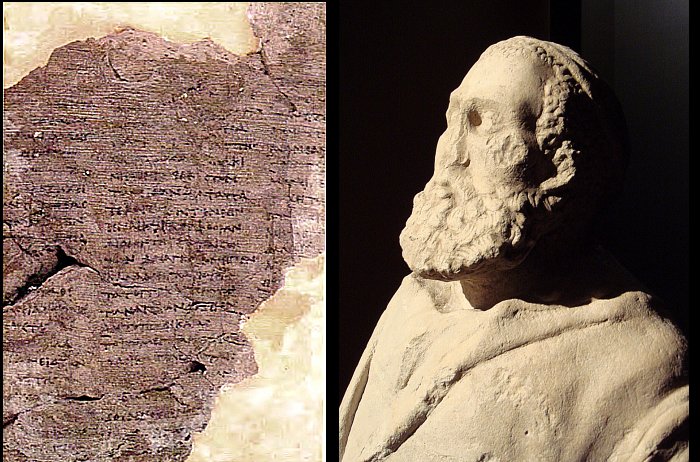Lost Ancient Greco-Bactrian Kingdom Of 1,000 Cities
A. Sutherland - AncientPages.com - The Graeco-Bactrian Kingdom was located in the easternmost region of the Hellenistic world. This ancient kingdom covered Bactria (northern Afghanistan) and lands to the north (known in ancient times as Sogdiana, in present-day Turkmenistan, Uzbekistan, and Tajikistan).
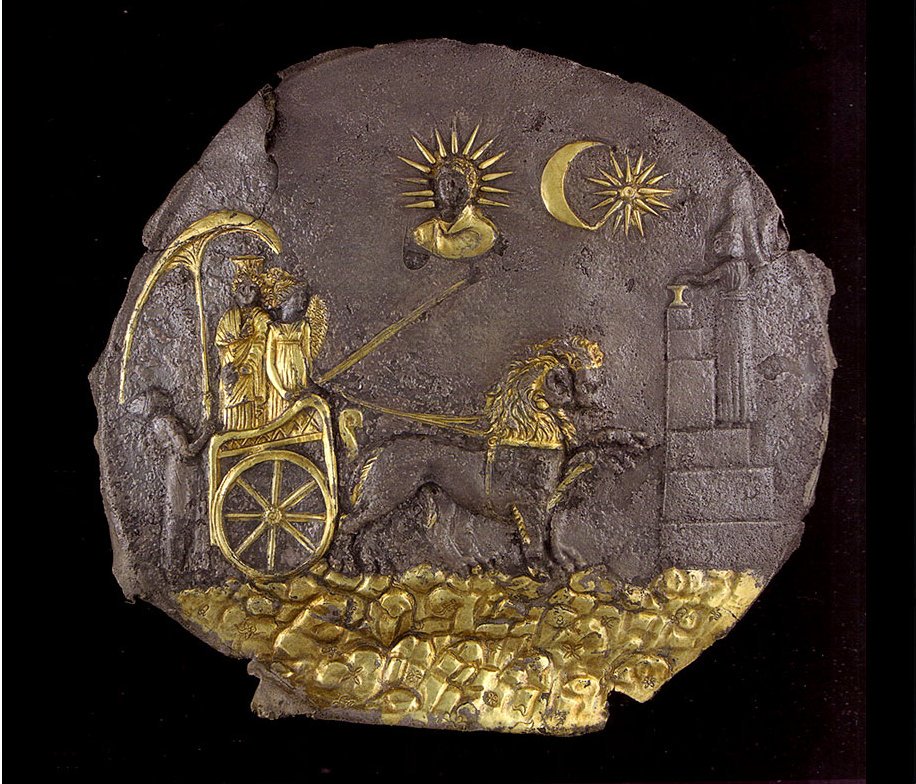 Silver plaque depicting the Greek goddess Cybele on a chariot is from a temple in Ai Khanum Afghanistan, 200 BC - Temporarily in Paris Musée Guimet. Image source - https://www.flickr.com/photos/28433765@N07/7102760363
Silver plaque depicting the Greek goddess Cybele on a chariot is from a temple in Ai Khanum Afghanistan, 200 BC - Temporarily in Paris Musée Guimet. Image source - https://www.flickr.com/photos/28433765@N07/7102760363
For at least two centuries before Alexander arrived in 330 BC, Bactria had been a prized part of the Achaemenid Empire (559-330 BC) and, before that, the Median Empire (728-559 BC).
Greek prisoners captured in wars between the Achaemenids and Greeks during the 5th and 4th centuries BC were often exiled to Bactria and taken to Bactria.
When Alexander the Great and his army arrived in Bactria, many Greeks were already there. As a result, the Greek population grew more extensive in the region.
Bactrian Greeks were often employed by the Achaemenids in significant battles and conscripted by Alexander for his campaigns in the East.
Left: Philosophical papyrus Ai Khanoum - Claude Rapin, 1992 (Non-creative 2D photograph of a 2nd century BCE papyrus.); Right: Sculpture of an old man, possibly a philosopher. Ai Khanoum, 2nd century BCE. Musee Guimet. Personal photograph 2006 - Public Domain
After the unexpected death of Alexander the Great, the situation in the region changed. Many of his Macedonian generals were left without a home. The kingdoms of the East were divided among Alexander, the Great's successors.
The government of Parthia was committed to Stasanor, a foreign ally because none of the Macedonians would deign to accept it. Subsequently, when the Macedonians were divided into parties by civil discord, the Parthians, with the other people of Upper Asia, followed Eumenes and went over to Antigonus when he was defeated.
After his death, they were under the rule of Seleucus Nicator and then under Antiochus and his successors, from whose great-grandson Seleucus they first revolted, in the first Punic war, when Lucius Manlius Vulso and Marcus Attilius Regulus were consuls.
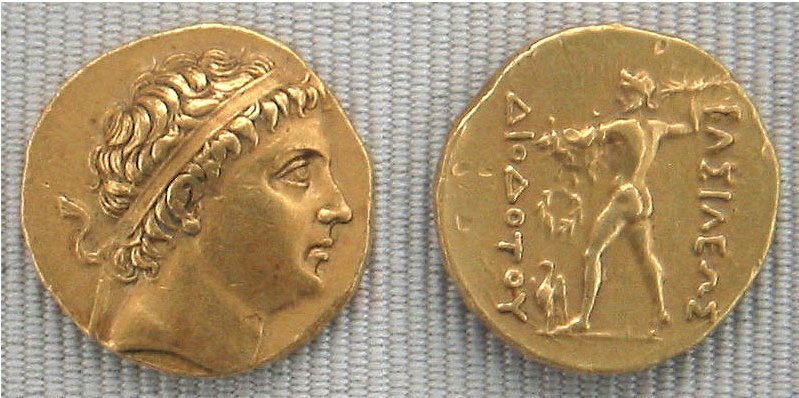 Gold coin of Diodotus I, Seleucid satrap of Bactria who rebelled against Seleucid emperor Antiochus and became the self-crowned ruler of the Greco- Bactrian kingdom. Image credit: National Library in Paris
Gold coin of Diodotus I, Seleucid satrap of Bactria who rebelled against Seleucid emperor Antiochus and became the self-crowned ruler of the Greco- Bactrian kingdom. Image credit: National Library in Paris
For their revolt, the dispute between the two brothers, Seleucus and Antiochus, procured them impunity; for a while, they sought to wrest the throne from one another, but they neglected to pursue the revolters.
The ancient Greco-Bactrian kingdom first appeared in 250 BC. E when the satrap Diodotos (or Theodotus in Latin), governor of the thousand cities of Bactria, rebelled against his Seleucid ruler, Antiochos II assumed the title of king.
In the third century BC, the Greco-Bactrian kingdom became so powerful that it declared independence.
People from various nationalities, such as Persians, Indians, Scythians, and many nomadic groups, contributed to developing a unique kingdom. Greco-Bactrian art was known to be one of the finest at this time.
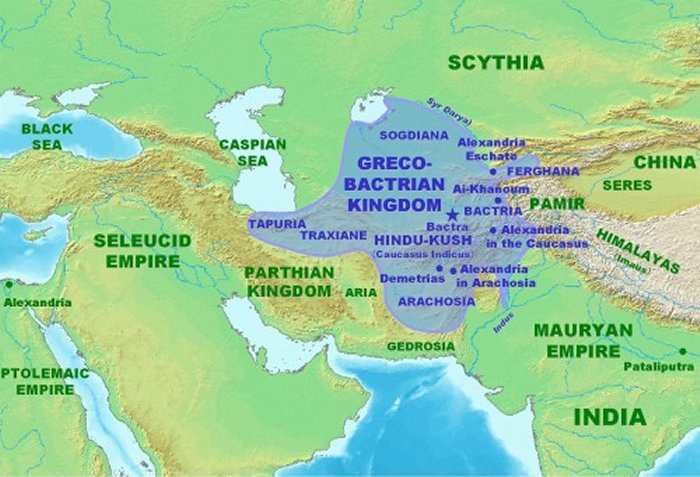 Greco Bactria Kingdom map -Approximate maximum extent of the Greco-Bactrian Kingdom circa 170 BC, under the reign of Eucratides the Great, including the regions of Tapuria and Traxiane to the West, Sogdiana and Ferghana to the north, Bactria and Arachosia to the south. Martinez-Sève, Laurianne (2020) "Afghan Bactria" in Mairs, Rachel , ed. The Graeco-Bactrian and Indo-Greek World (1st ed.), London: Routledge, pp. 218–219
Greco Bactria Kingdom map -Approximate maximum extent of the Greco-Bactrian Kingdom circa 170 BC, under the reign of Eucratides the Great, including the regions of Tapuria and Traxiane to the West, Sogdiana and Ferghana to the north, Bactria and Arachosia to the south. Martinez-Sève, Laurianne (2020) "Afghan Bactria" in Mairs, Rachel , ed. The Graeco-Bactrian and Indo-Greek World (1st ed.), London: Routledge, pp. 218–219
The culture and vast wealth these nomadic warriors accumulated during their advance were documented by the jewelry, ceremonial weapons, and other treasure found at the Scythian-era site, Tillia Tepe, in northwestern Afghanistan, where five princely graves yielded some 20,000 pieces of gold.
The Greco-Bactrian kingdom became known as the empire of 1,000 cities, but sooner or later, everything ended.
In 126 BC, the Chinese chronicler Zhang Qian visited Bactria (known as Daxia in Chinese) and described a kingdom that had collapsed while its large population and urban infrastructure remained:
 Ancient ruins of the Greco-Bactrian kingdom. Image credit: Center For Environmental Management
Ancient ruins of the Greco-Bactrian kingdom. Image credit: Center For Environmental Management
"Daxia (Bactria) is located ... south of the Gui (Oxus) river. Its people cultivate the land and have cities and houses. It has no great ruler but only several petty chiefs ruling the various cities. The people are poor in using arms and afraid of battle, but they are clever at commerce. After the Great Yuezhi moved west and attacked Daxia, the entire country came under their sway.
The country's population is large, numbering some 1,000,000 or more persons. The capital is called the city of Lanshi (Bactra) and has a market where all sorts of goods are bought and sold."
The last Graeco-Bactrian king was Heliocles, who ruled 150-125 BC and moved his capital to the Kabul Valley.
Written by – A. Sutherland AncientPages.com Staff Writer
Updated on January 21, 2023
Copyright © AncientPages.com All rights reserved. This material may not be published, broadcast, rewritten or redistributed in whole or part without the express written permission of AncientPages.com
More From Ancient Pages
-
 Huge Ancient Underwater Structure And Stunning Artifacts Discovered Off The Coast Of Salamis
Archaeology | Jun 26, 2019
Huge Ancient Underwater Structure And Stunning Artifacts Discovered Off The Coast Of Salamis
Archaeology | Jun 26, 2019 -
 On This Day In History: Ensisheim Meteorite Fell To Earth – On Nov 7, 1492
News | Nov 7, 2016
On This Day In History: Ensisheim Meteorite Fell To Earth – On Nov 7, 1492
News | Nov 7, 2016 -
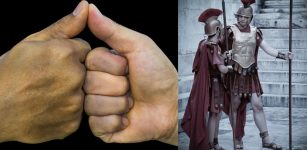 Why Did Ancient Romans Cut Off Their Thumbs?
Ancient History Facts | Mar 2, 2020
Why Did Ancient Romans Cut Off Their Thumbs?
Ancient History Facts | Mar 2, 2020 -
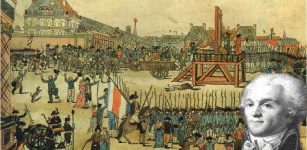 On This Day In History: Maximilien Robespierre Sent To The Guillotine – On July 28, 1794
News | Jul 28, 2016
On This Day In History: Maximilien Robespierre Sent To The Guillotine – On July 28, 1794
News | Jul 28, 2016 -
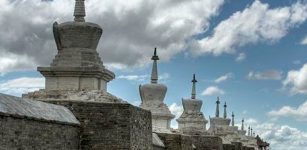 Karakorum – Genghis Khan’s Headquarters And Important City In History Of Silk Road
Civilizations | Mar 26, 2016
Karakorum – Genghis Khan’s Headquarters And Important City In History Of Silk Road
Civilizations | Mar 26, 2016 -
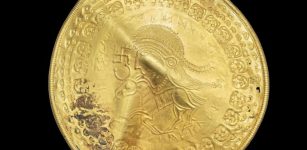 Vindelev Treasure Re-Writes Ancient History – World’s Oldest Runic Inscription Of God Odin Found On Ancient Gold Pendants
Archaeology | Mar 8, 2023
Vindelev Treasure Re-Writes Ancient History – World’s Oldest Runic Inscription Of God Odin Found On Ancient Gold Pendants
Archaeology | Mar 8, 2023 -
 On This Day In History: Solar Storm Known As The Carrington Event Took Place – On August 28, 1859
News | Aug 28, 2016
On This Day In History: Solar Storm Known As The Carrington Event Took Place – On August 28, 1859
News | Aug 28, 2016 -
 Extraordinary Discovery Of First Viking Tower In Viborg, Denmark Re-Writes Viking History
Archaeology | Jan 30, 2017
Extraordinary Discovery Of First Viking Tower In Viborg, Denmark Re-Writes Viking History
Archaeology | Jan 30, 2017 -
 Art Historians Solve Mystery Of Raphael’s Tomb By Reconstructing His Face
Archaeology | Aug 7, 2020
Art Historians Solve Mystery Of Raphael’s Tomb By Reconstructing His Face
Archaeology | Aug 7, 2020 -
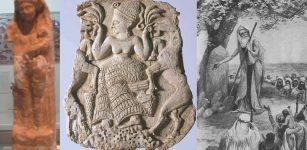 Lost And Forgotten Goddess Asherah – Queen Consort Of The Sumerian God Anu And Ugaritic God El
Biblical Mysteries | Apr 12, 2017
Lost And Forgotten Goddess Asherah – Queen Consort Of The Sumerian God Anu And Ugaritic God El
Biblical Mysteries | Apr 12, 2017 -
 Hayk – Legendary Patriarch And Founder Of Armenia Who Defeated King Bel Of Babylon
Featured Stories | Feb 10, 2022
Hayk – Legendary Patriarch And Founder Of Armenia Who Defeated King Bel Of Babylon
Featured Stories | Feb 10, 2022 -
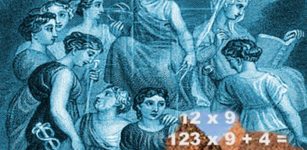 Number Nine: Sacred Symbol In Ancient Cultures
Ancient Symbols | Feb 14, 2017
Number Nine: Sacred Symbol In Ancient Cultures
Ancient Symbols | Feb 14, 2017 -
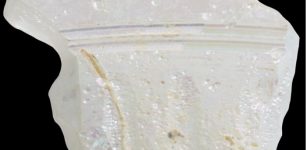 New Method Distinguishes Between Egyptian And Palestinian Glass During Roman Times
Archaeology | Jul 13, 2020
New Method Distinguishes Between Egyptian And Palestinian Glass During Roman Times
Archaeology | Jul 13, 2020 -
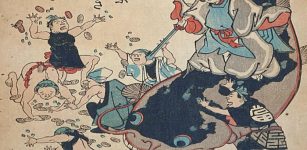 Odd Monster Namazu ‘Earth Shaker’ Was First Feared By People And Later Worshiped As Luminous Deity Repairing The World
Featured Stories | Feb 3, 2024
Odd Monster Namazu ‘Earth Shaker’ Was First Feared By People And Later Worshiped As Luminous Deity Repairing The World
Featured Stories | Feb 3, 2024 -
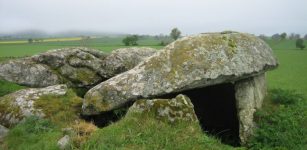 Megalith Tombs Were Family Graves In Stone Age Europe
Archaeology | Apr 15, 2019
Megalith Tombs Were Family Graves In Stone Age Europe
Archaeology | Apr 15, 2019 -
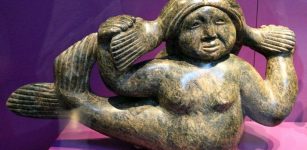 Sedna: Inuit Goddess Sacrificed By Selfish Father Fearing For His Own Life
Featured Stories | Jan 7, 2020
Sedna: Inuit Goddess Sacrificed By Selfish Father Fearing For His Own Life
Featured Stories | Jan 7, 2020 -
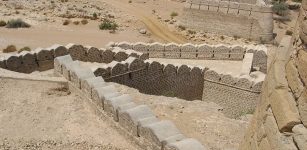 Great Wall Of Gorgan: One Of The World’s Most Sophisticated Frontier Walls Ever Built Is Now Examined
Archaeology | Dec 26, 2017
Great Wall Of Gorgan: One Of The World’s Most Sophisticated Frontier Walls Ever Built Is Now Examined
Archaeology | Dec 26, 2017 -
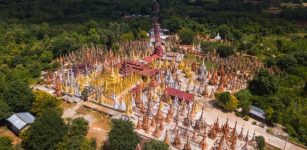 Magnificent Pagodas In Indein Village And Undiscovered Secrets In The Myanmar Jungle
Featured Stories | Oct 9, 2020
Magnificent Pagodas In Indein Village And Undiscovered Secrets In The Myanmar Jungle
Featured Stories | Oct 9, 2020 -
 Movie Stars’ Creepy Encounters With The Unexplained
Featured Stories | Oct 28, 2019
Movie Stars’ Creepy Encounters With The Unexplained
Featured Stories | Oct 28, 2019 -
 Deciphered Ancient Cuneiform Tablets Reveal Locations Of Long-Lost Cities And Shed Light On The Secrets Of Mesopotamia
Places | Oct 20, 2024
Deciphered Ancient Cuneiform Tablets Reveal Locations Of Long-Lost Cities And Shed Light On The Secrets Of Mesopotamia
Places | Oct 20, 2024

